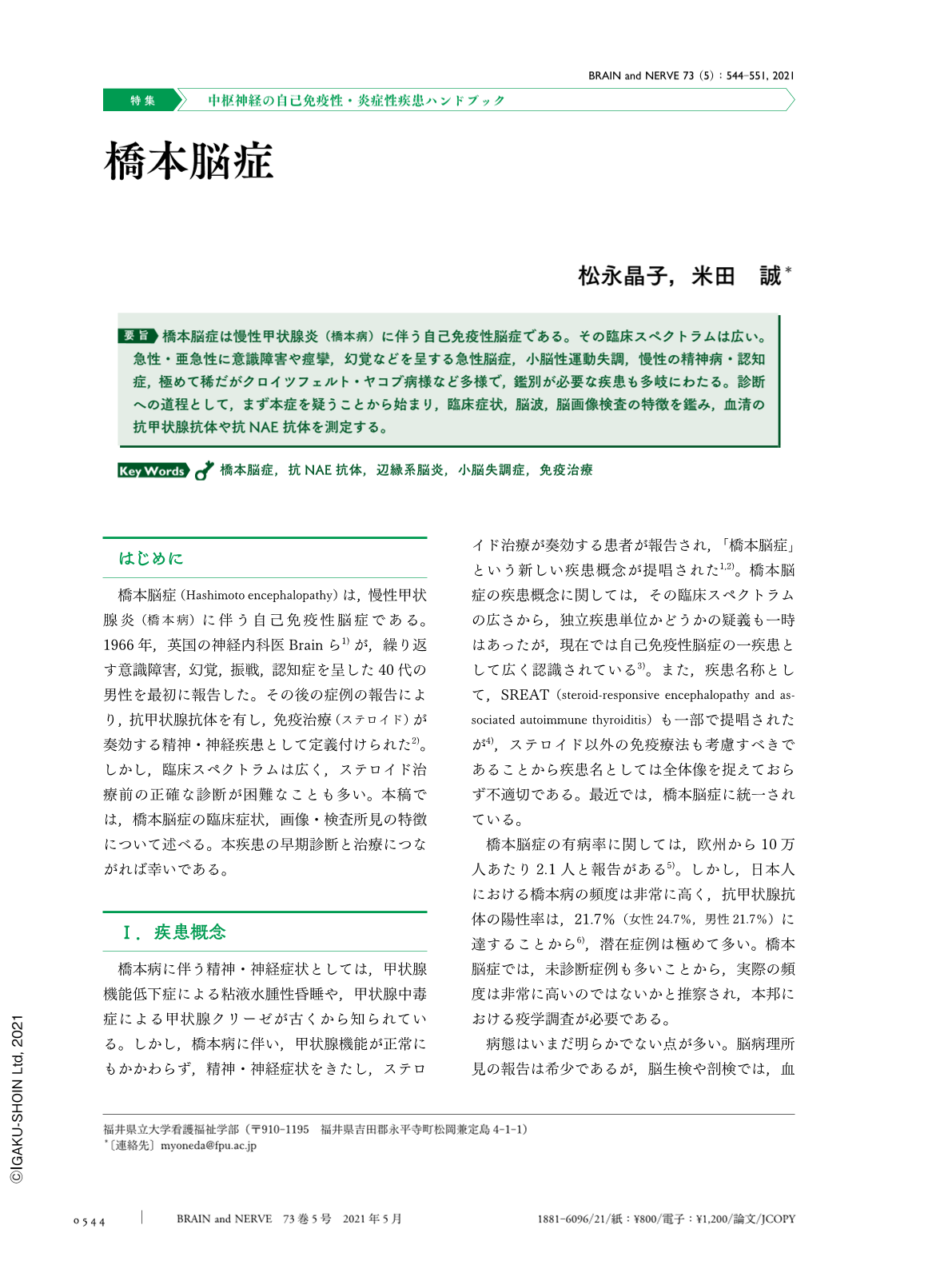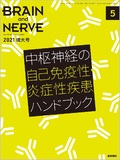Japanese
English
- 有料閲覧
- Abstract 文献概要
- 1ページ目 Look Inside
- 参考文献 Reference
橋本脳症は慢性甲状腺炎(橋本病)に伴う自己免疫性脳症である。その臨床スペクトラムは広い。急性・亜急性に意識障害や痙攣,幻覚などを呈する急性脳症,小脳性運動失調,慢性の精神病・認知症,極めて稀だがクロイツフェルト・ヤコブ病様など多様で,鑑別が必要な疾患も多岐にわたる。診断への道程として,まず本症を疑うことから始まり,臨床症状,脳波,脳画像検査の特徴を鑑み,血清の抗甲状腺抗体や抗NAE抗体を測定する。
Abstract
Hashimoto encephalopathy (HE) has been recognized as a new clinical disease based on an autoimmune mechanism associated with Hashimoto's thyroiditis. HE is successfully treated with steroids. In 2005, we discovered serum autoantibodies against the NH2-terminal of α-enolase (NAE) as a highly specific diagnostic biomarker for HE. We analyzed the serum anti-NAE autoantibodies and clinical features in many cases of HE from institutions in Japan and other countries. Approximately half of the patients with HE had anti-NAE antibodies. In our study, HE was widely distributed in patients aged 50-60 years. Most patients with HE were in euthyroid states, and all patients had anti-thyroid antibodies. The common neuropsychiatric features of these patients were consciousness disturbance and psychosis, followed by cognitive dysfunction, involuntary movements, seizures, and ataxia. Abnormalities in EEG and decreased cerebral blood flow on the brain SPECT were common findings. In contrast, abnormalities on the brain MRI were rare except for diffuse subcortical lesions and limbic lesions. Patients with HE had varied clinical phenotypes, including acute encephalopathy, chronic psychiatric form, and other particular clinical presentations, such as limbic encephalitis, progressive cerebellar ataxia, and Creutzfeldt-Jakob disease (CJD)-mimic form. The cerebellar ataxic form of HE clinically mimics spinocerebellar degeneration (SCD) and is characterized by the absence of nystagmus, absent or mild cerebellar atrophy, and lazy background activities on electroencephalography (EEG). Taken together, these features should indicate the possibility of encephalopathy associated with thyroid disorders.

Copyright © 2021, Igaku-Shoin Ltd. All rights reserved.


